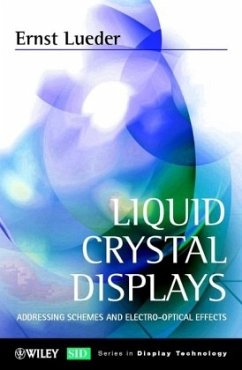The special feature of the book is the in depth treatment of both the electro-optic effects and the addressing schemes of liquid crystal displays elucidating their interdependence. After basic explanations readily understandable for students and stimulating for engineers, physicists and chemists, the reader is gradually led to the latest developments such as vertically aligned and mixed mode TN-displays, compensation foils, multiple line and low power addressing, transistor driven LCOS-devices with DRAM and SRAM addressing and TFT-addressing of transmissive displays with a 92% aperture ratio.The results are analytically derived and not merely stated to enhance insight and the capability to tailor displays to individual needs or to perform novel designs. Towards this aim the propagation of light with the help of Jones vectors, four different characterizations of the state of polarization and the operation as well as the passive and active matrix addressing of all LCDs, like nematic, polymer dispersed, guest host and bistable devices is explained. Besides the mainstream twisted and supertwisted nematic LCDs attention is drawn to bistable ferroelectric, chiral nematic and modified nematic LCDs as they are most promising for future portable low power systems.
Bitte wählen Sie Ihr Anliegen aus.
Rechnungen
Retourenschein anfordern
Bestellstatus
Storno

